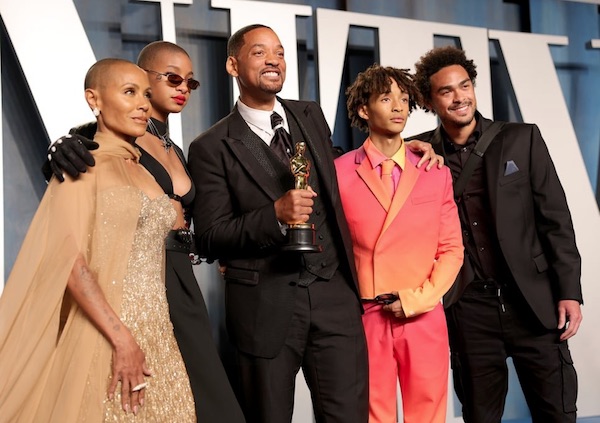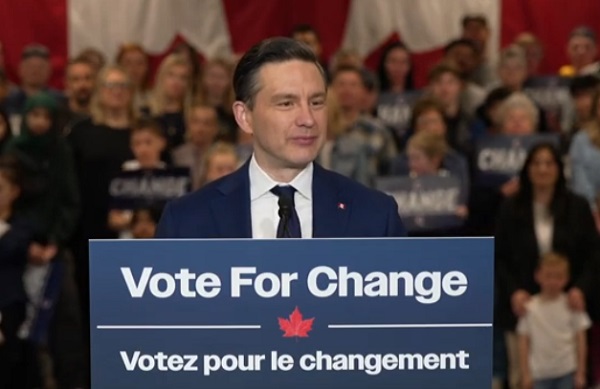Entertainment
TESSA VIRTUE, SCOTT MOIR AND PATRICK CHAN ANNOUNCE FIRST ANNUAL ROCK THE RINK TOUR

TICKETS ON SALE
MAY 3rd AT TICKETSALBERTA.COM
Red Deer, AB – April 9, 2019 – By the half-way point of last year’s sold out Thank You Canada tour, it was clear to figure skating superstars, Tessa Virtue, Scott Moir and Patrick Chan, that they were far from done creating and developing a new style of skating entertainment. Conversations then began in earnest to focus on the next logical step.
Yesterday Virtue and Moir appeared on CTV’s Your Morning, to announce Rock The Rink – an annual tour that focuses on being more than a figure skating show.
Combining the highest level of on-ice superstar talent with an ever-evolving touring production, Rock The Rink will produce the highest value of entertainment. This year – along with upgrades to lighting, video and interactive technology – live music will be introduced to the show, with featured special musical guest, Birds of Bellwoods.
“Last year, we rode the Olympic wave and carried the momentum through the Thank You Canada tour – a fulfilling project that truly allowed us to connect with fans coast to coast,” says Virtue. “This year, it’s critical that we elevate the production and generate authentic entertainment in new and creative ways. Scott and I have spent our career striving for more, taking risks, and daring ourselves to be better…our approach to this is no different.”
Adds Moir, “The goal for Rock The Rink is to be something that fans of skating and live entertainment will look forward to year after year, knowing that it will always be a can’t miss night,” adds Moir.
“We want to give people a memorable experience and broaden the scope of what can be done in the show skating realm,” continues Virtue. “We are ready for fresh and innovative ways to share our passion with audiences across the country!”
“I’m honored to be a part of such a unique and innovative production,” reflects Chan. “Anyone that has followed our careers understands our dedication to creativity and entertainment. We want each and every person to be a part of an experience and not just a ‘show’. What we’re creating hasn’t been done before and I can’t wait to show it to the fans.”
The production will tour from coast-to-coast across Canada, and will include a few select U.S. cities as well. The cast will again feature Canadian greats, Tessa Virtue and Scott Moir, Patrick Chan, Kaetlyn Osmond and Elvis Stojko. The show will also be bringing some world-renowned skating talent from Europe and the U.S.. Italian Olympic Medalist and World Champion, Carolina Kostner, and Italian World Champions, Anna Cappellini and Luca Lanotte, will each tour in North America for the first time, while Olympic Medalist and four time U.S. National Champion, Jeremy Abbott, will return to Canadian touring for the first time in seven years.
Tickets will go on sale Friday, May 3 at TICKETSALBERTA.COM The cross-country tour launches Saturday, October 5 in Abbotsford, BC and will hit over 30 cities before wrapping in St. John’s, NL. The tour, which is presented by Round Room, is proud of its continued relationship with Bell Media as the official tour media sponsor.
For a complete list of tour dates and to purchase tickets, please visit rocktherink.com.
ROCK THE RINK TOUR:
October 5 – Abbotsford, BC – Abbotsford Centre
October 6 – Penticton, BC – South Okanagan Events Centre
October 7 – Vancouver, BC – Thunderbird Arena
October 10 – Red Deer, AB –Westerner Park Centrium
October 11 – Dawson Creek, BC – Encana Events Centre
October 12 – Prince George, BC – CN Centre
October 13 – Grande Prairie, AB – Revolution Place
October 16 – Calgary, AB – Stampede Corral
October 17 – Lethbridge, AB – ENMAX Centre
October 18 – Regina, SK – Brandt Centre
October 19 – Medicine Hat, AB – Canalta Centre
October 20 – Brandon, MB – Keystone Centre
October 29 – Sault Ste Marie, ON – GFL Memorial Gardens November 1 – Sudbury, ON – Sudbury Arena
November 2 – Kitchener, ON – Memorial Auditorium
November 3 – Kingston, ON – Leon’s Centre
November 6 – Mississauga, ON – Paramount Fine Foods Centre November 7 – Ottawa, ON – TD Place
November 8 – St. Catharines, ON – Meridian Centre
November 9 – Oshawa, ON – Tribute Communities Centre November 10 – Cleveland, OH – Quicken Loans Arena
November 13 – Peterborough, ON – Peterborough Memorial Centre November 15 – Quebec City, QC – Videotron Centre
November 16 – Moncton, NB – Avenir Centre
November 23 – St. John’s, NL – Mile One Centre
*more dates to be announced soon
Entertainment
Pedro Pascal launches attack on J.K. Rowling over biological sex views

 MxM News
MxM News
Quick Hit:
Pedro Pascal, star of HBO’s The Last of Us, ignited backlash this week after publicly hurling an expletive-laced insult at author J.K. Rowling in response to her support for a landmark UK ruling that upheld the legal definition of sex as biological. Rowling celebrated the decision, which affirms the rights of women to single-sex spaces—a view shared by many who advocate for the safety and integrity of women’s rights. Pascal, a vocal progressive and LGBTQ+ activist, labeled Rowling a “heinous loser,” aligning himself with calls to boycott HBO’s upcoming Harry Potter reboot.
Pedro Pascal calls J.K. Rowling a “heinous loser” after she celebrated the Supreme Court’s ruling regarding trans women’s legal identities. pic.twitter.com/LEGMD79PjQ
— Pop Base (@PopBase) April 24, 2025
Key Details:
-
Pedro Pascal responded on Instagram to Rowling’s post celebrating a UK court ruling that legally defined “sex” as biological.
-
Pascal echoed an activist’s call for a fan-led boycott of the Harry Potter reboot, saying Rowling’s stance was “heinous LOSER behavior.”
-
HBO has downplayed concerns of a boycott, citing the blockbuster success of Hogwarts Legacy despite similar activist campaigns.
Diving Deeper:
The latest clash in the culture war surrounding Harry Potter author J.K. Rowling and the trans activist movement reached a new level of hostility this week when actor Pedro Pascal, a key face of HBO’s entertainment slate, stooped to name-calling on social media. His remarks came in response to Rowling’s defense of the United Kingdom’s recent court decision, which reaffirmed that sex, under British law, means biological sex—a ruling many women’s rights advocates hailed as a long-overdue step toward protecting vulnerable female spaces such as shelters, hospital wards, and sports.
Rowling, whose views on the importance of distinguishing biological sex from gender identity have made her a target of trans activists for years, posted a pointed but unapologetic reaction: “I love it when a plan comes together.” She added, “I get the same royalties whether you read [my books] or burn them. Enjoy your marshmallows!”
In the comments of a post by activist Tariq Ra’ouf—who had attacked Rowling and promoted a boycott of HBO’s Harry Potter reboot—Pascal added his own vulgar commentary: “Awful disgusting SHIT is exactly right. Heinous LOSER behavior.” While Pascal did not explicitly mention Harry Potter, the post he endorsed included calls to tank all future franchise content, including theme parks and merchandise.
Pascal’s involvement with HBO places the network in a difficult position. As the Emmy-nominated co-lead of The Last of Us, one of HBO’s crown jewels, Pascal’s comments are being widely interpreted as an implicit endorsement of the boycott. While HBO has attempted to downplay the activist push, the tension is palpable. Casey Bloys, HBO’s chief content officer, previously noted that the 2023 video game Hogwarts Legacy, which also faced calls for boycotts due to Rowling’s views, still became the year’s top-selling game.
Pascal’s activism is personal as well as political. His sister, Lux Pascal, publicly transitioned in 2021, and he has frequently signaled support for trans activism. At the UK premiere of Marvel’s Thunderbolts, Pascal wore a shirt that read “Protect the Dolls,” a slogan popularized in trans activist circles.
Rather than “heinous,” Rowling’s remarks represent a reasoned defense of biological reality and a pushback against an increasingly aggressive ideology that demands conformity and punishes dissent. Her critics, like Pascal, resort to vulgarity and character attacks instead of engaging with the substance of her argument. But Rowling has stood firm in supporting women’s rights and advocating for clarity in laws that impact everything from sports to safety in single-sex spaces—positions grounded in truth, not hate.
Business
California planning to double film tax credits amid industry decline

From The Center Square
By
California legislators have unveiled a bill to follow through with the governor’s plan of more than doubling the state’s film and TV production tax credits to $750 million.
The state’s own analysis warns it’s likely the refundable production credits generate only 20 to 50 cents of state revenue for every dollar the state spends, and the increase could stoke a “race to the bottom” among the 38 states that now have such programs.
Industry insiders say the state’s high production costs are to blame for much of the exodus, and experts say the cost of housing is responsible for a significant share of the higher costs.
The bill creates a special carve-out for shooting in Los Angeles, where productions would be able to claim refundable credits for 35% of the cost of production.
California Gov. Gavin Newsom announced his proposal last year and highlighted his goal of expanding the program at an industry event last week.
“California is the entertainment capital of the world – and we’re committed to ensuring we stay that way,” said Newsom. “Fashion and film go hand in hand, helping to express characters, capture eras in time and reflect cultural movements.”
With most states now offering production credits, economic analysis suggests these programs now produce state revenue well below the cost of the credits themselves.
“A recent study from the Los Angeles County Economic Development Corporation found that each $1 of Program 2.0 credit results in $1.07 in new state and local government revenue. This finding, however, is significantly overstated due to the study’s use of implausible assumptions,” wrote the state’s analysts in a 2023 report. “Most importantly, the study assumes that no productions receiving tax credits would have filmed here in the absence of the credit.”
“This is out of line with economic research discussed above which suggests tax credits influence location decisions of only a portion of recipients,” continued the state analysis. “Two studies that better reflect this research finding suggest that each $1 of film credit results in $0.20 to $0.50 of state revenues.”
“Parks and Recreation” stars Rob Lowe and Adam Scott recently shared on Lowe’s podcast how costs are so high their show likely would have been shot in Europe instead.
“It’s cheaper to bring 100 American people to Ireland than to walk across the lot at Fox past the sound stages and do it and do it there,” said Lowe.
“Do you think if we shot ‘Parks’ right now, we would be in Budapest?” asked Scott, who now stars in “Severance.”
“100%,” replied Lowe. “All those other places are offering 40% — forty percent — and then on top of that there’s other stuff that they do, and then that’s not even talking about the union stuff. That’s just tax economics of it all.”
“It’s criminal what California and LA have let happen. It’s criminal,” continued Lowe. “Everybody should be fired.”
According to the Public Policy Institute of California, housing is the single largest expense for California households.
“Across the income spectrum, 35–44% of household expenditures go to covering rent, mortgages, utilities and home maintenance,” wrote PPIC.
The cost of housing due to supply constraints now makes it nearly impossible for creatives to get their start in LA, said M. Nolan Gray, legislative director at housing regulatory reform organization California YIMBY.
“Hollywood depends on Los Angeles being the place where anybody can show up, take a big risk, and pursue their dreams, and that only works if you have a lot of affordable apartments,” said Gray to The Center Square. “We’ve built a Los Angeles where you have to be fabulously wealthy to have stable and decent housing, and as a result a lot of folks either are not coming, or those who are coming need to paid quite a bit higher to make it worth it, and it’s destroying one of California’s most important industries.”
“Anybody who arrived in Hollywood before the 2010s, their story is always, ‘Yeah, I showed up in LA, and I lived in a really, really dirt-cheap apartment with like $10 in my pocket.’ That just doesn’t exist anymore,” continued Gray. “Does the Walt Disney of 2025 not take the train from Kansas City to LA? Almost certainly not. If he goes anywhere, he goes to Atlanta.”
-

 2025 Federal Election2 days ago
2025 Federal Election2 days agoTrump Has Driven Canadians Crazy. This Is How Crazy.
-

 Automotive1 day ago
Automotive1 day agoHyundai moves SUV production to U.S.
-

 Entertainment2 days ago
Entertainment2 days agoPedro Pascal launches attack on J.K. Rowling over biological sex views
-

 2025 Federal Election1 day ago
2025 Federal Election1 day agoAs PM Poilievre would cancel summer holidays for MP’s so Ottawa can finally get back to work
-

 2025 Federal Election1 day ago
2025 Federal Election1 day agoPoilievre Campaigning To Build A Canadian Economic Fortress
-

 armed forces16 hours ago
armed forces16 hours agoYet another struggling soldier says Veteran Affairs Canada offered him euthanasia
-

 2025 Federal Election2 days ago
2025 Federal Election2 days agoCarney Liberals pledge to follow ‘gender-based goals analysis’ in all government policy
-

 2025 Federal Election1 day ago
2025 Federal Election1 day agoThe Cost of Underselling Canadian Oil and Gas to the USA





